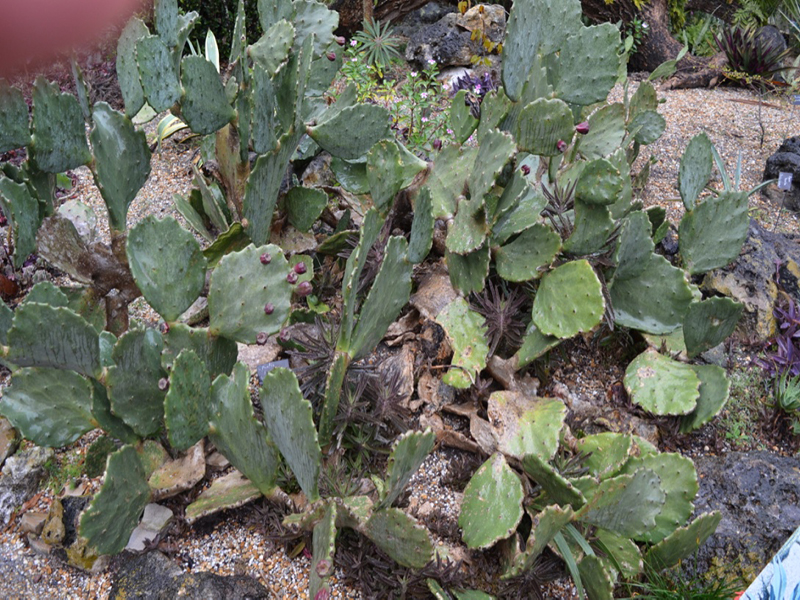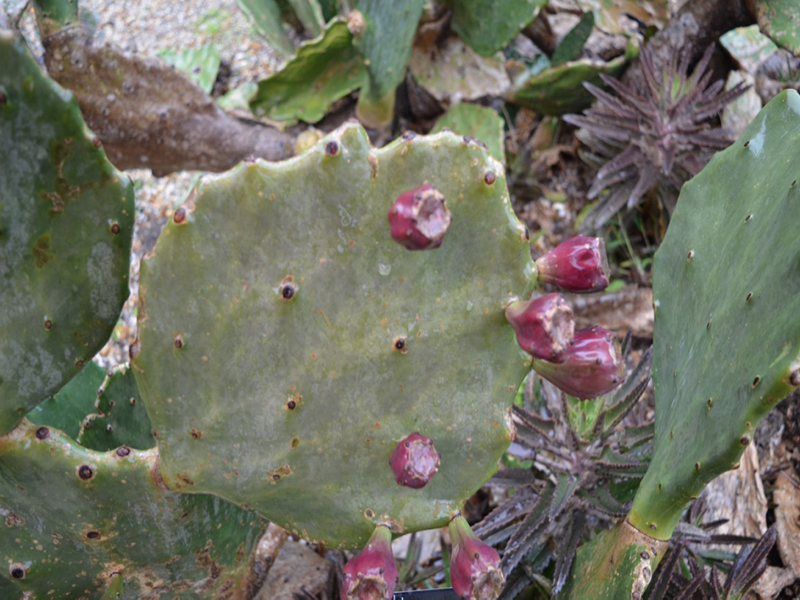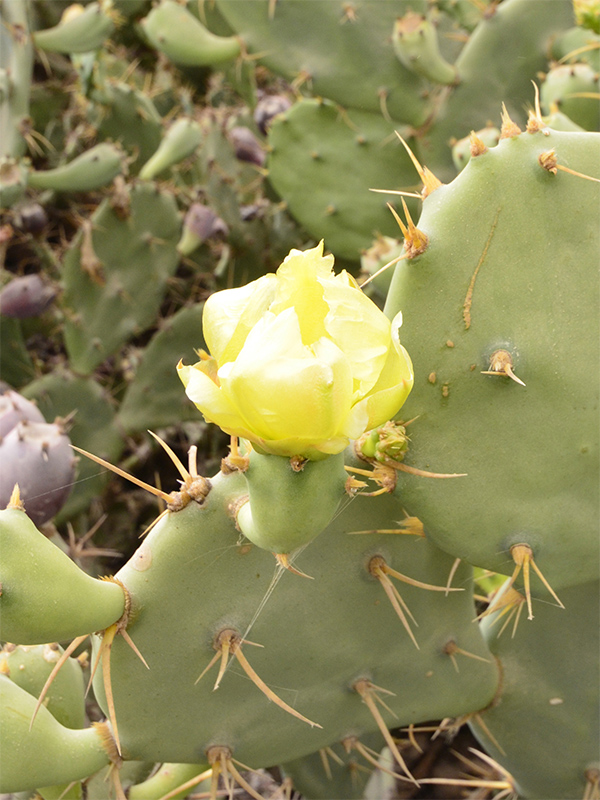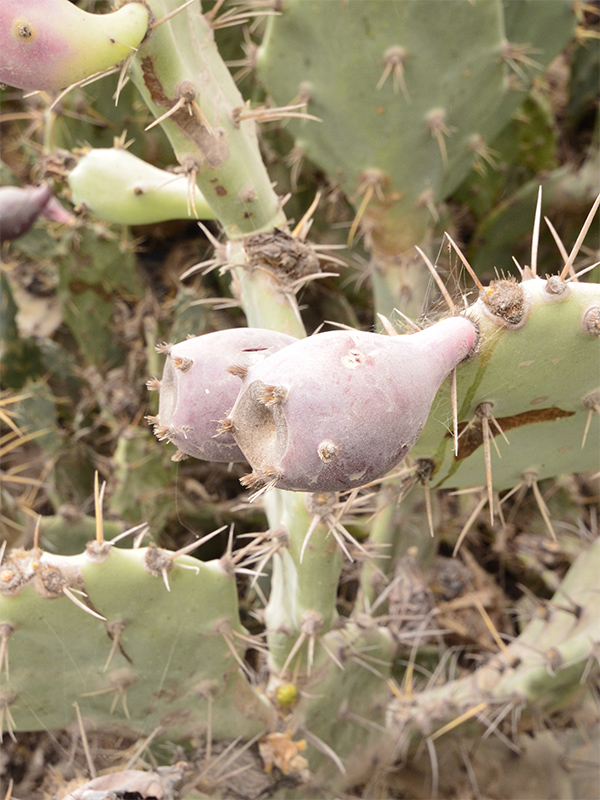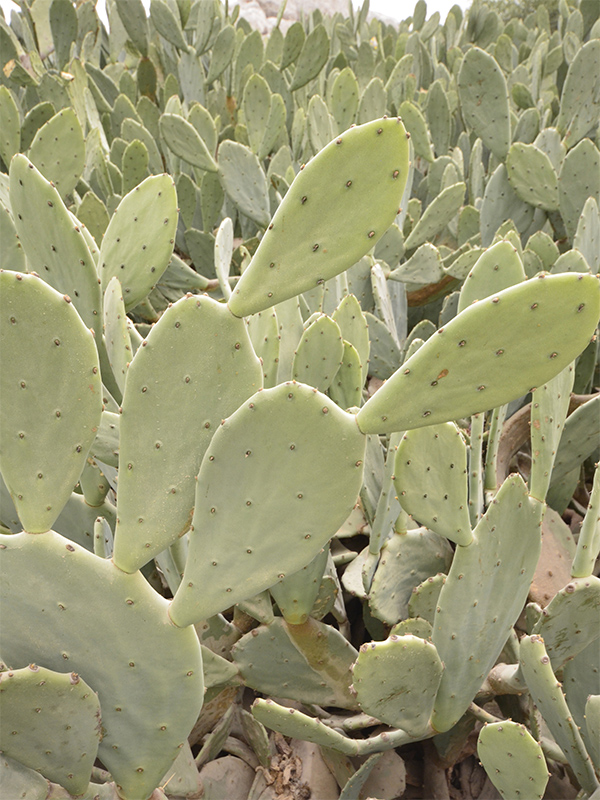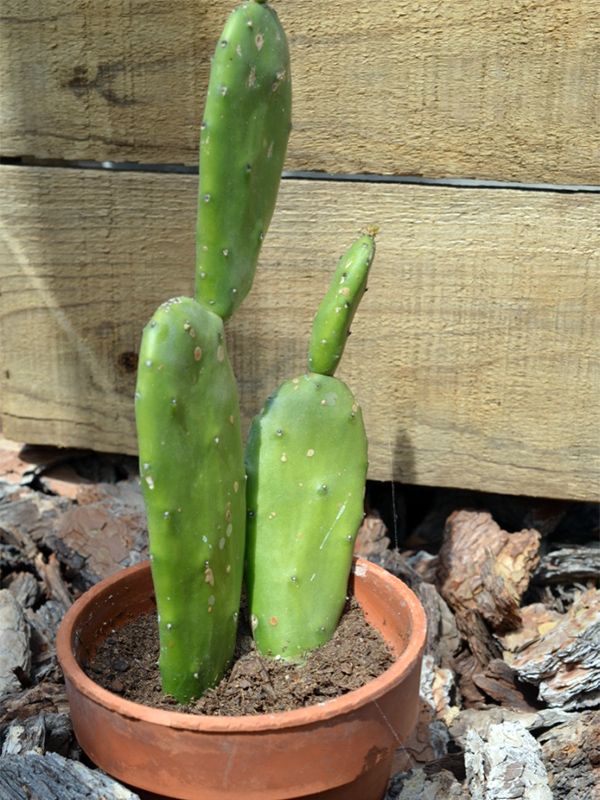
Perennials, Tropicals > Opuntia > Opuntia ficus-indica > Opuntia ficus-indica
Opuntia ficus-indica
Sweet Prickly Pear, Barbary Fig, Cactus Pear, Indian Fig, Indian Fig Prickly Pear, Mission Cactus, Mission Prickly Pear, Panini, Prickly Pear, Prickly Pear Cactus, Prickly-pear, Smooth Mountain Prickly Pear, Smooth Prickly Pear, Spineless Cactus
Origin: Native to Mexico.
| Family |
| Cactaceae |
| Genus |
| Opuntia |
| Species |
| ficus-indica |
| Category |
| Perennials, Tropicals |
| Synonyms |
| Cactus ficus-indica Linnaeus, Sp. Pl. 1: 468. 1753; C. opuntia Linnaeus; Opuntia compressa J. F. Macbride; O. vulgaris Miller |
| USDA Hardiness Zone |
| 8b - 10b |
| Canadian Hardiness Zone |
| Requires cool season protection under glass. |
| RHS Hardiness Zone |
| H4 - H1c |
| Temperature (°C) |
| (-9.4) - 1.7 |
| Temperature (°F) |
| 15 - 35 |
| Height |
| 3 - 6 m, and trunk diameter is 30-45 cm. |
| Spread |
| 1 m |
Photographs
Description and Growing Information
Flowering Period
| Landscape |
| Among potted succulent collections, as a potted patio or indoor plant, in rock gardens as a tree-shaped succulent or as a specimen. |
| Cultivation |
| Grow in full sun in gravelly, dry, well-draining loose soil. |
| Shape |
| Upright spreading. |
| Growth |
| Medium |
| Pests |
| None known. Rot may occur if soil is too wet. |
| Habitat |
| Dry slopes, plains and rocky outcroppings. |
| Bark/Stem Description |
| Highly spiny, slightly woody and robust succulent bark. Spines resemble long thick hairs and cover the entire bark surface. |
| Leaf Description |
| Fleshy succulent bodies with short, thin hair-like spines. |
| Flower Description |
| Showy cup-shaped blooms with 10 - 20 pinnate-forked petals arranged in a loose rosette formation. |
| Fruit Description |
| Oblong-ovate prickly pears borne after blooms on succulent bodies. |
| Colour Description |
| Sage green succulent bodies with silvery-white spines. Tan-brown bark. Red to crimson red blooms. Dull dark reddish-brown prickly pears. |
| Texture Description |
| Coarse. |
| Notable Specimens |
| The University of Alberta Botanic Garden, Devon, Alberta, Canada. Centennial Conservatory, Thunder Bay, Ontario, Canada. Harry P. Leu Gardens, Orlando, Florida, United States of America. |
| Propagation |
| By stem cuttings (rooting pads) and seed. |
| Ethnobotanical Uses (Disclaimer) |
| Used for food, medicine, livestock feed, fencing, an ornamental, and an indirect source of dye. |
